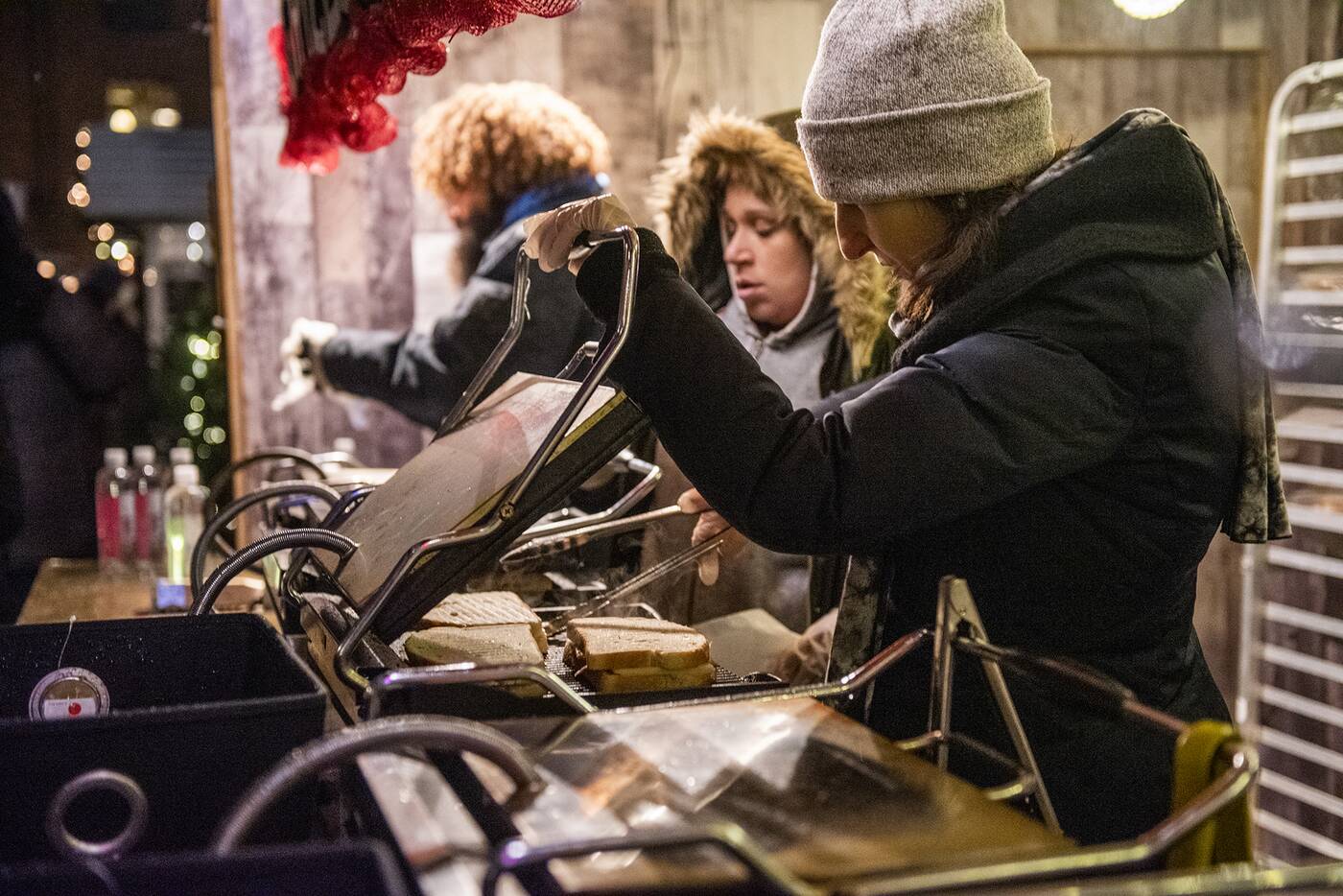
The Christmas Market might very well be the jolliest place in the city.
This beloved takeover of the Distillery District has been spreading its cheer with all things Christmas-related for the past nine years, and during that time has become one of the foremost holiday markets in Canada—maybe even North America.
Every winter, about 40 vendors move into the outdoor cabins scattered across the cobblestone streets of Toronto's historic district to sell their seasonal wares to hoards of holiday revelers.
But while it's all hot apple cider and twinkly lights for the thousands who visit the Christmas Market yearly, it's a much rougher ride for those running the show behind the scenes.
Vendors must brave six weeks of brutal weather conditions and stringent guidelines on how their cabins should look, what they should sell, and when they must open, in order to hold a coveted place in the world-renowned European-inspired market.
To begin with, it's incredibly difficult to get into the market at all. Of the 40 temporary vendors who pop up in the Distillery, just one to five of those cabins are up for grabs each year.
The application process is a strict one: only businesses offering winter or holiday-related products with that "small-town feeling" should bother applying through the Christmas Market website.
Typically, wares must be something that's easy to carry around (like stocking stuffers) or European market-type foods that aren't too messy, aren't mass manufactured, and usually can't be found elsewhere in the city.

Vendors must work into the evenings, sometimes in frigid weather, during the annual Christmas Market. Photo by Hector Vasquez.
In terms of aesthetics, cabins must look perfect. Vendors can be 'dinged' (a shameful warning of omission) for not looking
'Christmas-y' enough, meaning twinkle lights, ribbons, and other festive decor like pine cones, must be aplenty for managers to give the go ahead.
It's a lot of pressure, and more expensive than other markets and expos held in the city throughout the year. But it's a cost that most businesses are willing to make to be a part of the event.
They're even willing to grin and bear it through temperatures that can range from wet and snowy to downright frigid, with the only reprieve being heaters (vendors must buy their own) that are stuffed into their cramped quarters.
"They have to have the physical constitution and tenaciousness to make it through the market," says the director and co-creator of the Christmas Market Matthew Rosenblatt of those working the event.
"Some people are standing out in the cold eight to 10 hours a day."
Throughout their shifts, vendors are visited by the market manager and Christmas 'elves,' who check up on businesses and deliver updates on the upcoming forecast.
Some days are milder than others; others days, there's potential warnings to seek shelter or even evacuate the scene due to massive snow and wind storms.
In the face of horrid Canadian winters, it almost feels like an unnecessary fight for survival to sell items as quaint as Christmas bobbles and alpaca socks.
But just like with Santa and his workshop elves, it's all frigid hands on deck to bring the Christmas cheer to the city.
by Tanya Mok via blogTO

No comments:
Post a Comment